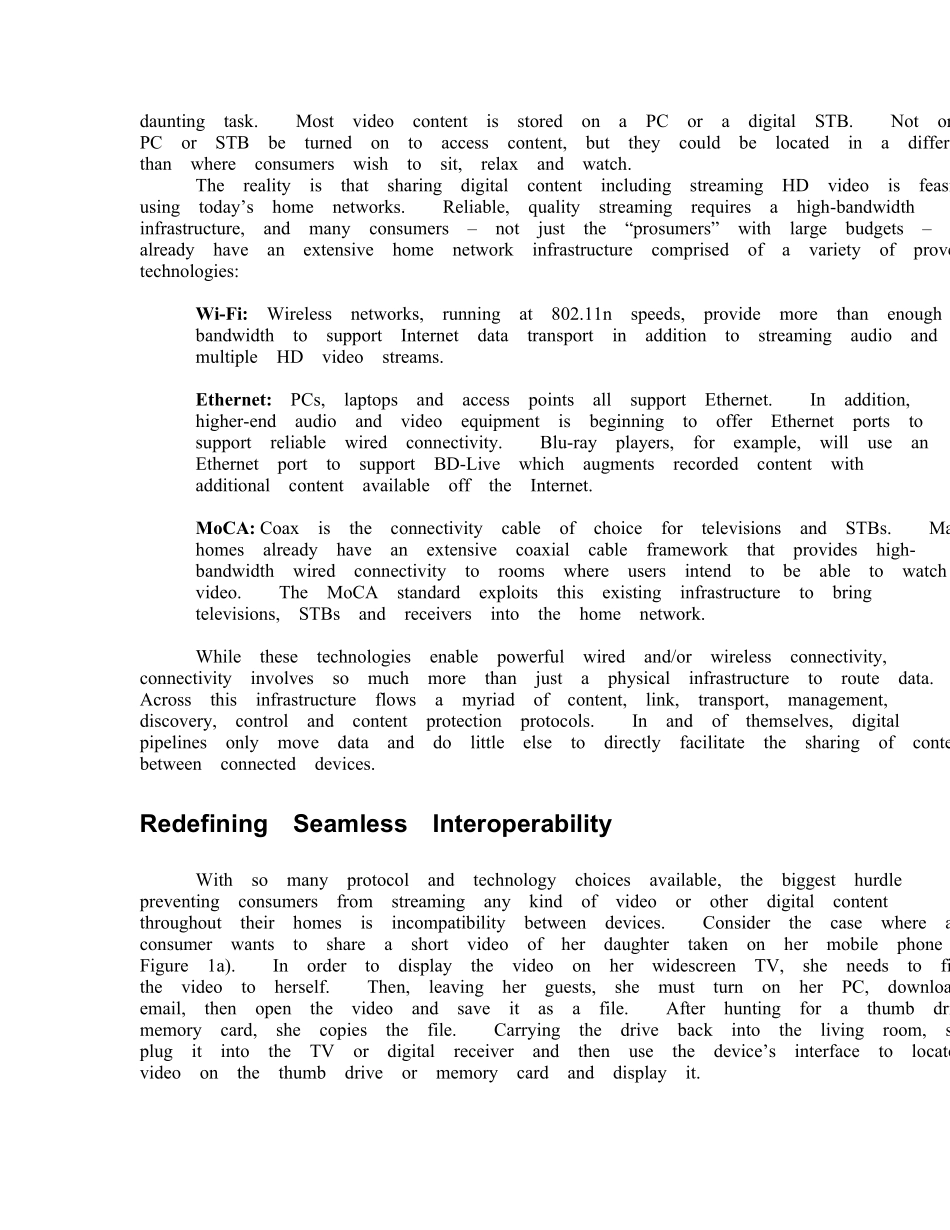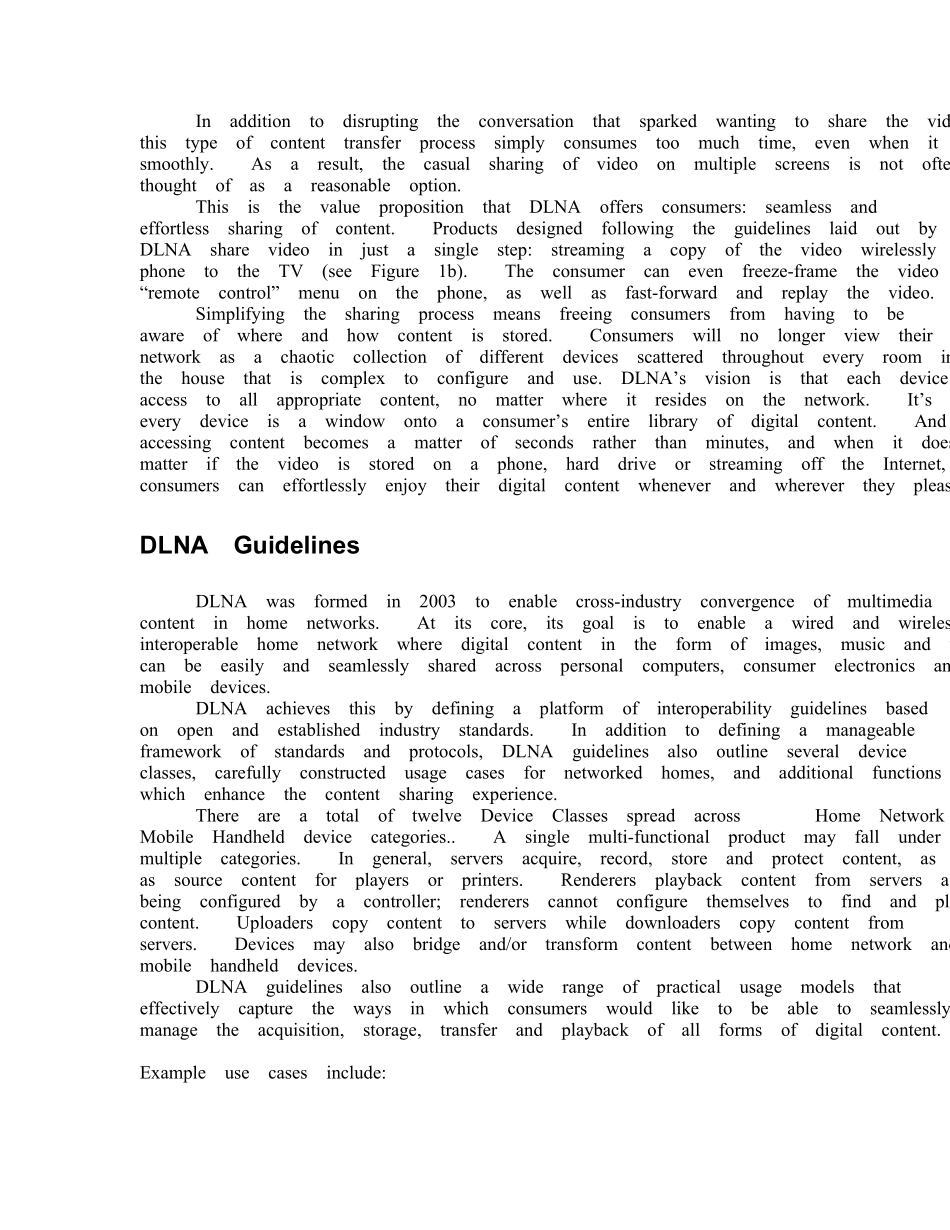DLNA for HD Video Streaming in Home Netw orking Environments With the proliferation of digital content and the expanding variety of connected and IP-enabled consumer electronics (CE) devices, consumers are increasingly seeking ways to efficiently stream high definition (HD) video among their home networking devices. The connected home is on the road to convergence, enabling exciting new applications and easy digital media sharing between CE devices, mobile handsets, set-top boxes (STBs), and personal computers (PCs) that will change the way people interact and share HD video in the next-generation digital home. This emerging “connected home” ecosystem comprises a variety of connectivity technologies – including Wi-Fi, Ethernet and MoCA – as well as a host of different file formats and incompatible software applications that can lead to consumer confusion. With so many ways to implement the sharing of digital video throughout the home, there are nearly as many ways for users to experience incompatibility and frustration. In order to eliminate this confusion and to enable as seamless a user experience as possible, devices need to interoperate transparently. The key means for enabling these connectivity technologies to work together is to bring together proven and established network and multimedia standards into a single consistent and reliable framework that serves developers, consumers and service providers alike. To this end, Digital Living Network Alliance (DLNA) has developed robust, technical guidelines defining device classes and networked home use cases which, when built into digital TVs, STBs, Blu-ray players and other devices allow high-quality streaming of multimedia content over wireless and wired ...


